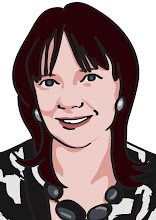Many of us realise how important attitude is in determining our success and happiness in life. But when we say 'he or she has a great attitiude', what do we mean? What is our evidence of this 'attitude'? Attitude comprises three components (or the TEA model of existence):
- thoughts (T) - what we think or believe about things
- emotions (E) - the feelings or emotions we experience (most often in our body)
- actions (A) - our behaviour and how we act
Thoughts, emotions and behaviour do influence each other in an interchangable, mutually dependable relationship: if I am nervous and anxious about an exam tomorrow, and stay up all night worrying about it, this is unlikely to change my view that 'I always do crap at exams'.
However, it is Thoughts which are the master regulator of this interdependent system. When it comes to attitude the emphasis is on thinking as thinking powerfully influences how we feel and behave.
And what we think and how we think can be changed; we can learn new strategies to literally 'change our minds'!
I had an interesting coaching session on this the other day that reminded me of the relationship between thoughts, emotions and behaviour and how, sometimes, people can find it almost impossible to separate them out. It is only when you can see them as separate components within a system that you can start to take control of them to work to your advantage.
My coachee had a particular issue with clients who were disatisfied and called her to make last minute changes to deadlines or tasks. She told me it made her feel anxious and agitated. In this particular context, like any situation of 'adversity', it is the meaning that put on the event that is the route cause of any problem!
We 'stalked' the issue (the negative feeling) and got her to connect to that and fully realise what that meant in her body (tight stomach, raised temperature, busy head). And then we worked on what she wanted instead (to feel calm, relaxed).
Then we went through the TEA model, looking at the adverse event (phone call from a disatisifed client) and the thoughts and beliefs, and emotions she experienced. It took a couple of attempts to successfully separate the thoughts from the feelings; but when we did it was a real 'ah ah' moment for her. It was like she had been blinded by being so associated into the emotional experience that she could see the real culprits: her thoughts!
Then we worked on the thoughts. What would be alternative ways to think about that? What would so-and-so think in this situation? etc. She needed a lot of help with this: not surprising, when someone is learning something about their map of the world that they didn't know existed!
Then, I got her to read these alternative thought streams out and 'voila'. She told me 'now all I feel is calm and relaxed, but with a sense of challenge', 'I can rise to this'. And we had it!










